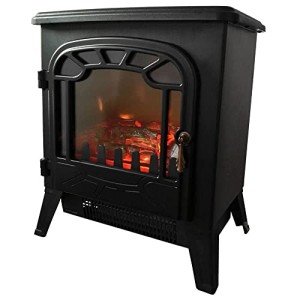7 Simple Strategies To Completely Making A Statement With Your Buy Fireplace
A Comprehensive Guide to Buying a Fireplace: Choosing the Right Fit for Your Home
Fireplaces have actually long been a central function in homes, offering warmth, atmosphere, and a meeting place for families and buddies. Whether you're building a new home, refurbishing an existing area, or simply aiming to update your existing setup, purchasing the ideal fireplace can make all the difference. This guide aims to provide a detailed introduction of different fireplace alternatives, factors to consider for installation, and tips for upkeep.
Kinds of Fireplaces
When thinking about a brand-new fireplace, homebuyers will find several types to pick from. Each type comes with its own unique features, benefits, and disadvantages. Below is a breakdown of typical fireplace types:
Fireplace Type
Description
Pros
Cons
Wood-Burning
Traditional option utilizing logs for fuel.
Genuine experience, strong heat source.
Needs regular upkeep, fuel storage, and ventilation.
Gas
Uses gas or gas, normally with a vented or ventless choice.
Easy to use, less maintenance than wood.
Requires a gas line, may lose some atmosphere.
Electric
Plug-and-play options with no need for venting, offering simulated flames.
No setup needed, safe for homes.
Does not have the authenticity of genuine flames.
Ethanol
Uses bio-ethanol fuel in a portable or set system.
Tidy burning, no venting required.
More costly fuel costs, limited heat output.
Pellet
Burns compressed wood pellets for fuel, similar to wood-burning.
Eco-friendly, low emissions.
Requires electrical power for operation, specific fuel needed.
Key Considerations When Buying a Fireplace
1. Room Size and Layout
The fireplace needs to appropriate for the size and design of the space. A fireplace that is too large might overwhelm the space, while one that is too small might not effectively heat the location.
2. Heating Needs
Think about just how much heat you need for the space. An electric fireplace might be sufficient for a smaller sized room, while a wood-burning or gas fireplace is perfect for larger locations requiring considerable warmth.
3. Aesthetic and Style
Fireplaces are available in a variety of styles, from contemporary to rustic. It's necessary to select one that matches the total decoration of your home.
Popular Fireplace Styles:
- Modern sleek designs
- Traditional ornate finishes
- Rustic stone or brick
- Minimalist electric models
4. Fuel Source
Picking a fuel source is important for function in addition to choice. Property owners need to consider the availability, expense, and convenience of the fuel they want to utilize.
5. Setup Requirements
Understand the installation requirements, as some fireplaces, particularly wood-burning systems, need a chimney, while others might be more straightforward to install. House owners may need to seek advice from professionals to make sure correct installation and compliance with regional codes.
6. Budget
Fireplaces can range considerably in rate from economical electric designs to high-end gas and wood-burning systems. Aside from the initial purchase cost, think about installation costs and ongoing fuel expenses.
Installation Process
Installing a fireplace is a significant job that may require expert help. Here is a summary of the basic steps included:
Planning and Design
- Assess areas and designs based on design and heating requirements.
Get Necessary Permits
- Check local structure policies and acquire any needed permits for setup.
Choose a Professional Installer
- Consider working with a licensed professional for security and compliance with codes.
Prepare the Installation Site
- Clear the area and set up any needed products or support structures.
Follow Manufacturer Instructions
- Follow particular guidelines provided by the fireplace producer throughout setup.
Last Inspection
- After setup, guarantee a last assessment is conducted to validate the system's safety and performance.
Upkeep Tips for Your Fireplace
To guarantee durability and ideal performance of your fireplace, regular upkeep is crucial. Here are some ideas to keep your fireplace in terrific shape:
Wood-Burning Fireplaces
- Clean the chimney a minimum of once a year to prevent creosote accumulation.
- Use experienced wood for less smoke and much better performance.
- Examine the fireplace structure for fractures or wear and tear.
Gas Fireplaces
- Inspect gas connections for leaks occasionally.
- Clean the glass and the burner for optimum efficiency.
- Schedule yearly servicing with a qualified technician.
Electric Fireplaces
- Dust and tidy the system frequently.
- Check connections and change any malfunctioning parts if needed.
- Guarantee the unit is gleaming tidy before usage each season.
Ethanol and Pellet Fireplaces
- Keep fuel sources saved safely and far from heat.
- Tidy the burner and ensure no obstructions take place.
Frequently asked questions
Q: What type of fireplace is most effective for heating?A: Gas fireplaces and
pellet ranges tend to have greater performances, transforming more energy to heat compared to wood-burning options.
Q: Can I install a fireplace in any room?A: While lots of spaces can accommodate a fireplace, ventilation, available area, and local guidelines may impact expediency.
Q: Are electric fireplaces safe?A: Yes,
electric fireplaces are usually really safe, include no genuine flames, and typically include features that avoid overheating.
**Q: How do I select the right size fireplace? address here : Consider the square footage of the room and talk to suppliers about suggested BTU rankings for heating effectiveness. Purchasing a fireplace is a substantial
decision that can considerably boost your home. By considering the kind of fireplace, your heating requires, setup requirements, and continuous upkeep, house owners can pick the ideal system to fulfill their preferences and improve their home for years to come. Whether you favor a traditional wood-burning fireplace or a modern electric option, the ideal fireplace will supply heat, comfort, and style that can be treasured for generations.  **
**